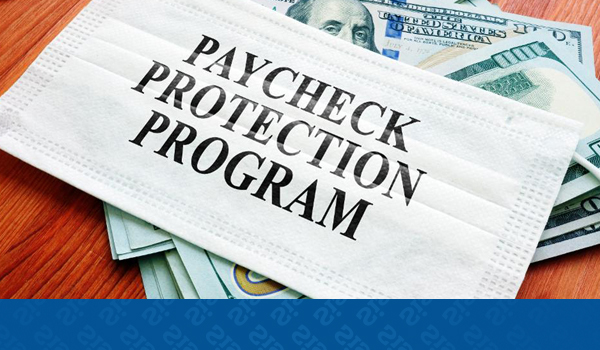On Friday, June 5, 2020, the President signed the Paycheck Protection Program Flexibility Act of 2020, softening some of the harsh requirements business owners were required to meet in order to have their PPP loans forgiven. The Act addresses some of the main concerns of loan recipients, such as loosening restrictions on how funds are spent and extending the period within which funds should be exhausted. Surprisingly, the Act is relatively short, making just five specific changes.
Extension of 8-week Period to 24 Weeks
PPP borrowers originally had eight weeks to spend their loan proceeds. If funds were spent on payroll and a few other costs as originally intended, the loan would be fully forgiven. However, many employers were not able to use those funds within the 8-week allotment because businesses were shut down or employees were unable or unwilling to return to the workplace. An unintended situation was created where many businesses were going to be on the hook for paying back their PPP loans. By extending the period to 24 weeks, most employers will have an easier time reaching full, or nearly full, forgiveness.
Businesses receiving the earliest PPP loans are approaching the end of their 8-week window. For those who have satisfied the original PPP requirements, an election is available to use the original 8-week period and forgo the new 24-week time frame. This election will make sense for businesses that can achieve full loan forgiveness now, allowing them to clean up their balance sheet and put the PPP issue behind them. For borrowers with more recent loans, they now have more flexibility regarding the use of funds, somewhat offset by the requirement to carry this burden to December 31, 2020.
75% Payroll Requirement is Now a 60% “Cliff”
Prior to passage of the Act, borrowers were required to reduce the amount of loan forgiveness if less than 75% of loan proceeds went to payroll related costs. There was a sliding scale reduction for forgiveness based on the amount spent on non-payroll related items such as rent, utilities and interest. The Act lowers the requirement to 60%; however, failure to meet the 60% requirement will now result in zero loan forgiveness. Various senators have said they intended for the sliding scale to remain in effect. We will see if technical corrections are coming. For now, assume not. Given the new 24-week period, the 60% requirement should be much easier to satisfy.
Reduction in Workforce Rehire Date Moved to December 31st
Borrowers originally had to rehire workers to pre-pandemic levels by June 30. For example, if your business employed 25 full time employees in February, you were required to restore your workforce to that level by June 30, or face a reduction in forgiveness. The new deadline for restoring your workforce to pre-pandemic levels is December 31, 2020.
The Act also provides two exceptions to satisfying the workforce requirement. Borrowers may exclude from the calculation employees who turned down a bona-fide offer to be rehired at the same pay and hours. Additionally, the Act now allows an exception for businesses that cannot hire qualified employees or are unable to reach pre-pandemic workforce levels because of COVID-19 related rules and restrictions, such as social distancing and sanitation.
Repayment Period Extended to 5 Years at 1%
Borrowers who do not achieve full loan forgiveness, or never intended to, may repay their loans over 5 years. There is no prepayment penalty. The interest rate remains at 1%.
Two-Year Deferral of Employer’s Share of Social Security Taxes
Borrowers are eligible to defer payment of the employer’s share of payroll taxes, regardless of PPP loan forgiveness. Originally, the CARES Act disallowed any deferral of taxes for businesses that achieved PPP loan forgiveness.
Under the Act, for the period March 27, 2020 through December 31, 2020, employers may defer the payment of the employer portion of Social Security taxes. To avoid a failure to deposit penalty, 50% of the deferred amount must be deposited by December 31, 2021, with the remaining 50% being deposited by December 31, 2022. While this provision does ease cash flow burden and provide flexibility to employers, failure to timely fund the deferred deposits can be catastrophic.
There are still some issues that Congress and the Small Business Administration need to address, such as:
- If PPP proceeds are exhausted in week 12 (or 17, or some random date), must employers wait until December 31 to apply for forgiveness?
- Are the banks prepared to accept loan forgiveness applications? Can they really process the application within sixty days?
- We know the loan forgiveness is nontaxable, but are the payroll and related expenses also deductible?
- Will the 60% requirement remain a “cliff”, or will it become a sliding scale, as was the case with the prior 75% requirement?
- Does the payroll limit on owner compensation increase from $15,385 to $46,155 now that the time-period has tripled from eight to 24 weeks?
The Act is largely positive and a welcome change for business owners. Congress will eventually provide guidance on the questions above. We will continue to keep you updated as we receive more information.
